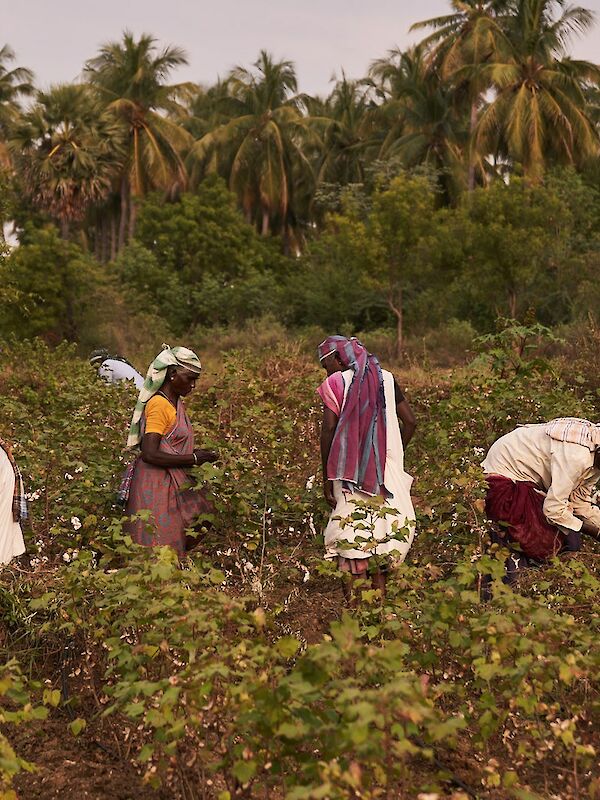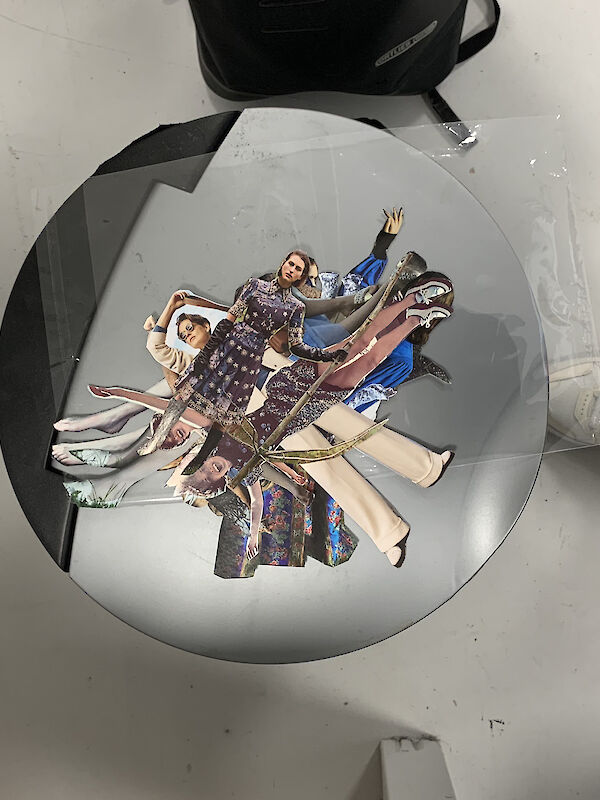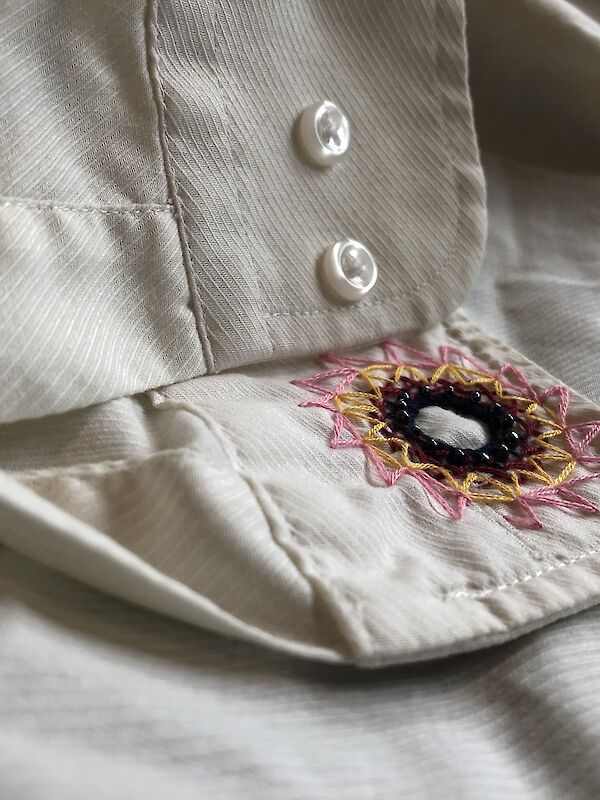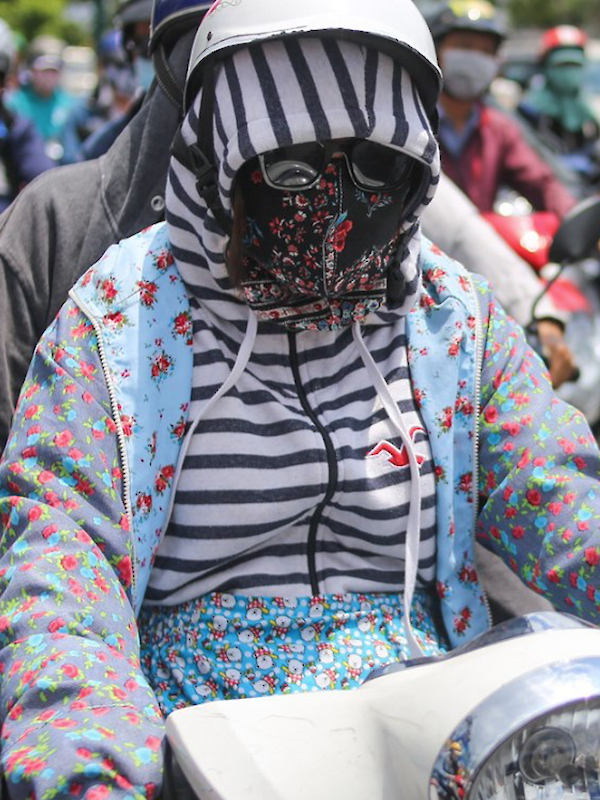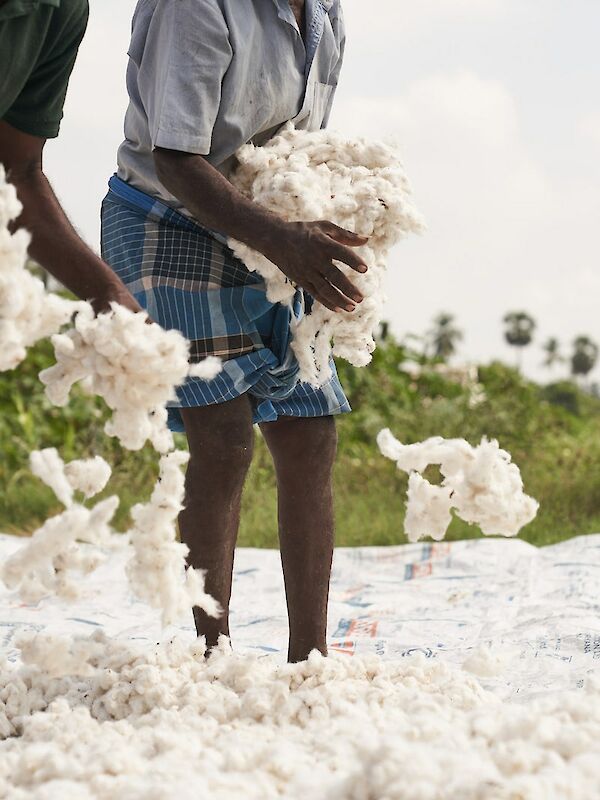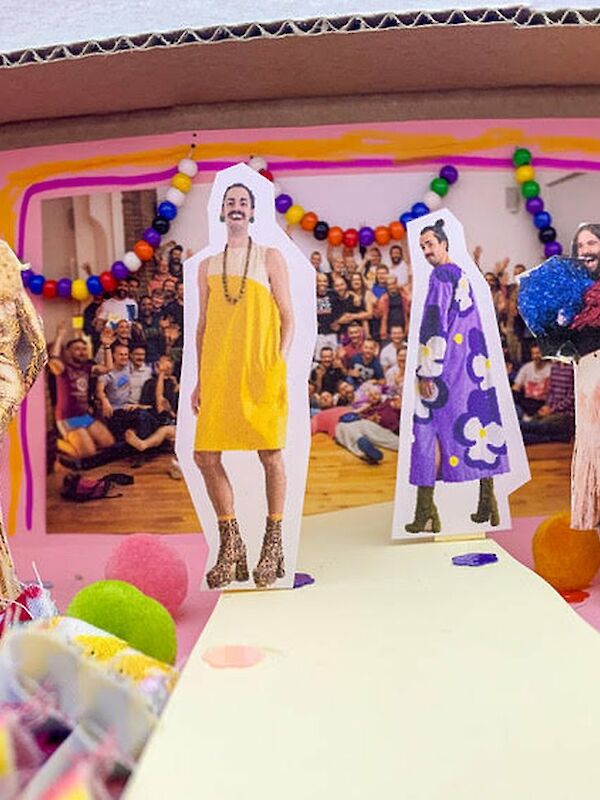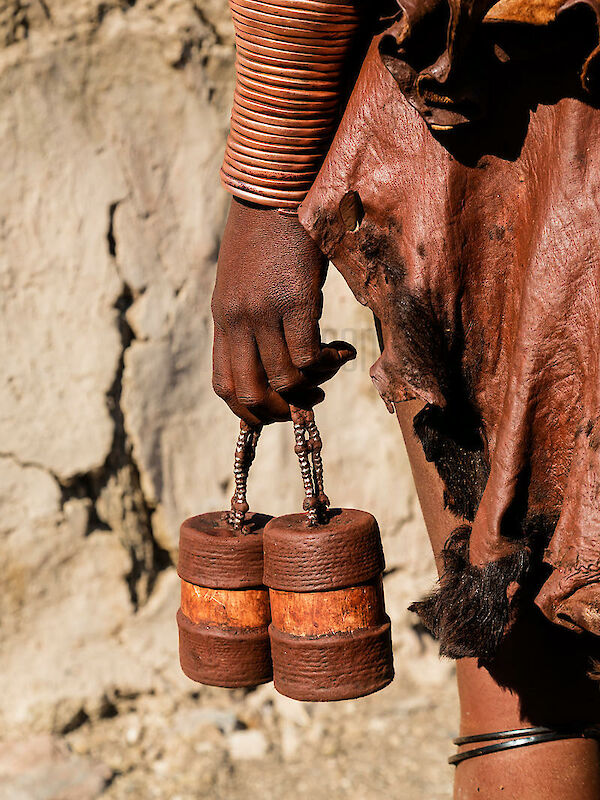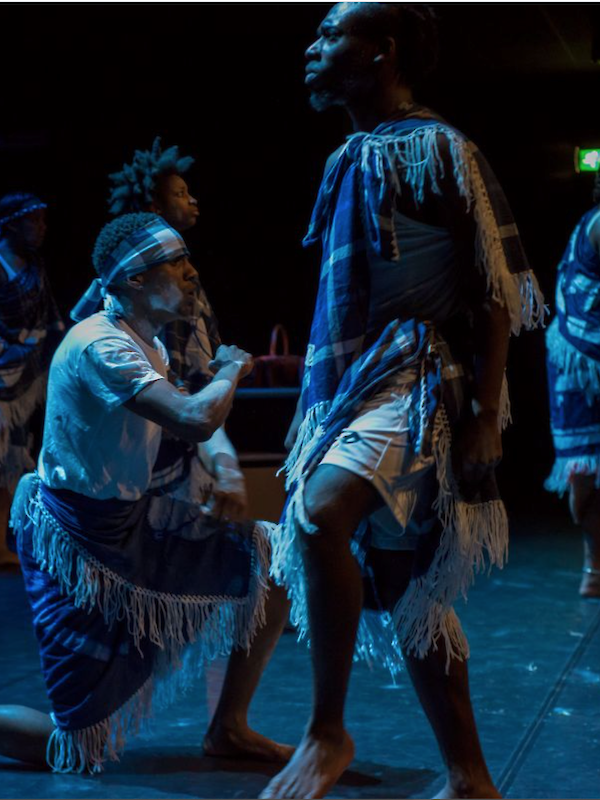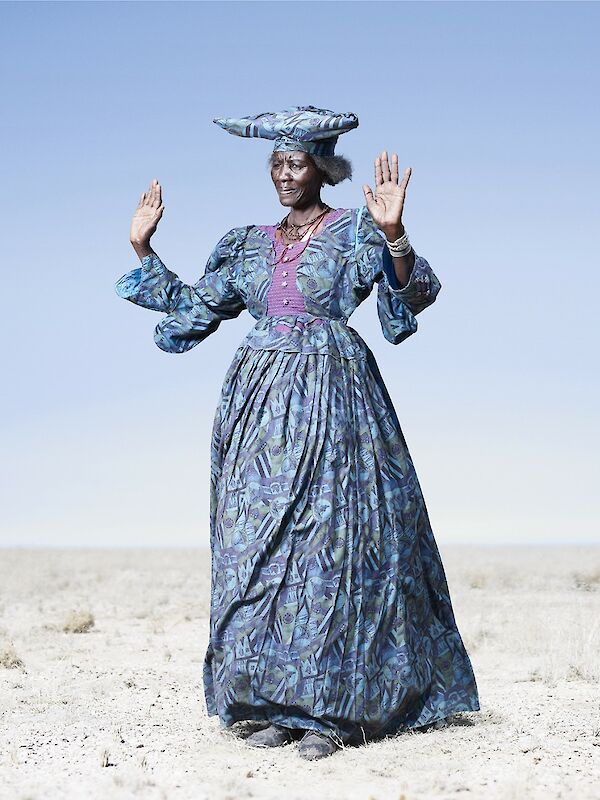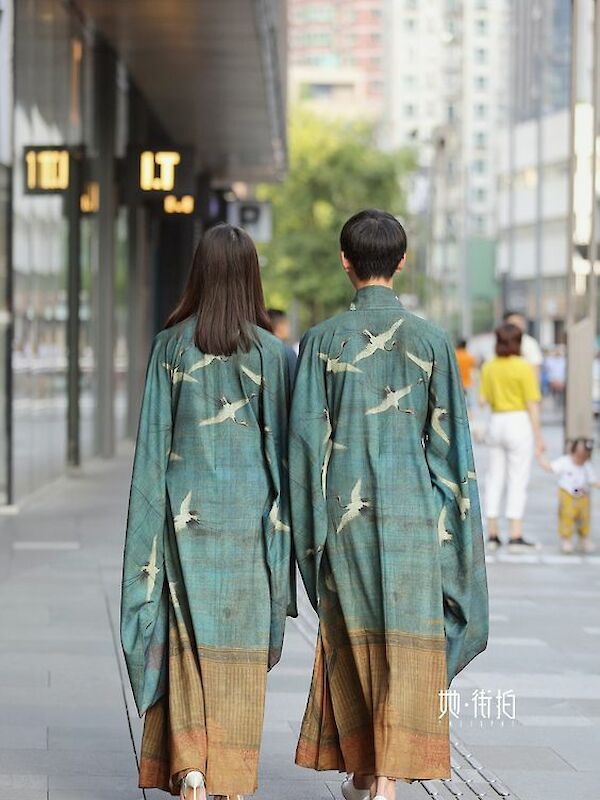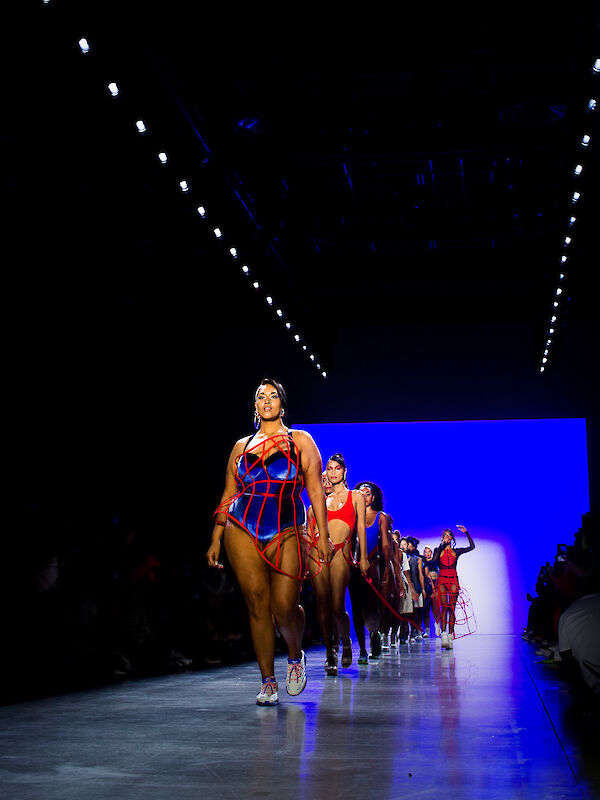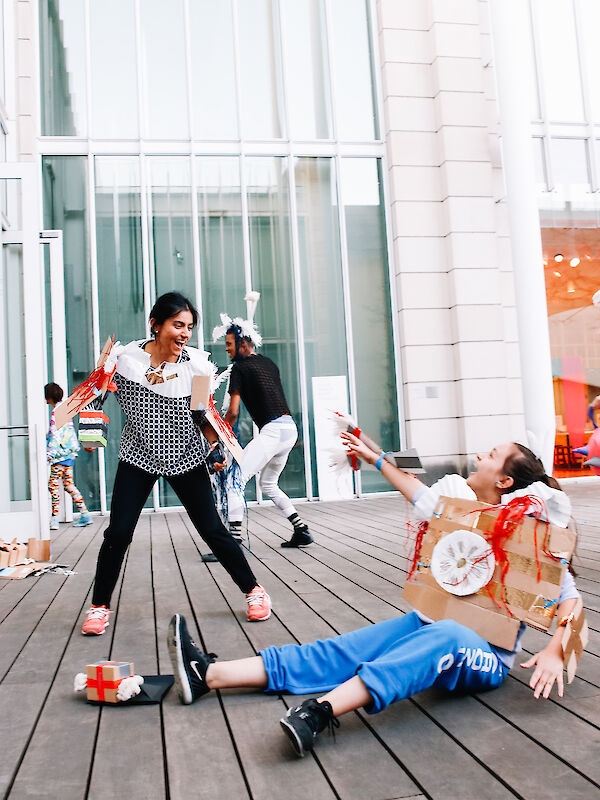
FASHION AGAINST CAPITALISM
After two interventions, the stage has been set for fashion’s “deeply flawed definition”[1], and its ensuing inequalities and erasures [2]. For this third intervention, we would like to reflect not only on what has been, but what is now and perhaps even more so, what is possible in the future providing possibilities for dealing with and intervening in the fashion system’s destructive cycle. As a platform, Warehouse aims to create an open, engaging and inclusive environment that facilitates critical dialogue and the creation of a discourse that goes beyond treating fashion as a commodity. From that line of thought, we decided not to write a longread ourselves but to turn this longread into a multilogue with several critical fashion practitioners who deal with the inequalities, erasures and other destructive character traits of the fashion industry head on in their practice. When we talk about critical fashion practices, we like to refer Ricarda Bigolin who wrote: “I would like to (…) defer to colleague and collaborator Brad Haylock’s definition around ‘What is critical design?’ that is related to practices of social enquiry, activism, non-commercial and attesting to exploitation or injustices apparent in industrial practice. With this in mind, it can be claimed that critical fashion practices should be understood as only occurring outside fashion systems or industrial modes of practice.[3] We would like to make explicit here that these practices – also the practices that we as Warehouse feel connected to – are about questioning fashion as a capitalist industry and clothing as a commodity. Why this emphasis on questioning capitalism? In the first Whataboutery Clare Farrell from Extinction Rebellion posed that all proposals for a sustainable or ethical form of fashion that come from a capitalist perspective are doomed to fail [4].
In line with this political scientist Ellen Meikens Wood reflects in The Origin of Capitalism that “Capitalism is (…) incapable of promoting sustainable development, not because it encourages technological advances that are capable of straining the earth’s resources but because the purpose of capitalist production is exchange value not use value, profit not people”[5].
As todays fashion industry and capitalism are inseparably intertwined, we agree with Clare Farrell’s statement. So, when addressing the fashion industry and searching for alternatives we try to depart from a distinction between the fashion industry and other forms of fashion. The fashion industry or industrial fashion (as Sandra Niessen describes it) is, we believe, just one of the many forms of fashion under the umbrella of a ‘fashion system.’ But this capitalist form of fashion is far out the most dominant and damaging one. We would first like to elaborate more on this before we introduce the critical fashion practitioners participating in this multilogue.
Capitalism, the early textile industry and colonialism
Logically fashion (we would like to say ‘fashion industry’) has often been referred to as ‘the favourite child of capitalism’[6]; Like capitalism, the fashion industry is growth-driven, it creates and thrives upon disconnection, commodity fetishism, insecurities and alienation, and exploitation of natural resources and living beings. It focuses on profit not people, on exchange value instead of use value. But this definition of fashion as ‘the favourite child of capitalism’ has also been criticized. In What Fashion Is Not Only, Renate Strauss writes that although this definition “(…) captures the inextricable and interdependent relationship between fashion and capitalism. Yet, it also suggests fashion to be infantile, innocent and Western. And fashion clearly is neither” [7]. According to Strauss the “(…) infantilization of fashion means that it does not have to assume responsibility for its impact (…) More generally, it permits fashion to disassociate itself from human and natural capital”[8]. And this misleading idea of fashion as an innocent child instead of an exploitative growth-driven business is beneficial for fashion’s image as something fun, playful and leisurely.To get a grip on and some kind of understanding of the complex relation between the fashion industry and capitalism, we would like to look back into history. In the second longread Sustainability must mean Decolonization for Intervention 02: Origins, Indian-American fashion blogger, speaker and activist Aditi Mayer explains how the British colonists’ enforcement of the growth of cotton instead of edible crops in India led to the establishment of the East India Company in 1664, the largest importer of cotton to Europe.[9] She states: “Exploited labour and agricultural dexterity set the groundwork for the international fashion industry (...)”[10].
In regards to exploitation of labour and land in the textile/fashion industry we recommend to listen to the second episode of the New York Times podcast series 1619 [11] in which host Nikole Hannah-Jones narrates the story of how we cannot understand capitalism fully without knowing the brutal history of the cotton plantations. While cotton was a much-coveted commodity in the early 17th century, such as oil, it was also very labour-intensive and in need of a lot of land and was therefore expensive to produce: it took about ten hours for one enslaved worker just to pick the seeds out of one pound of cotton and you could only grow cotton on the same patch of land for about three years before that soil was depleted. But as technical developments lead to much greater productivity, the cotton production took off. As producing cotton required a lot of land the United States government took millions of acres from Native American peoples and sold that land back cheap to white settlers. And this is when, at the end of the eighteenth century, slavery really took off, eventually leading to banks starting to mortgage enslaved workers. At the height of slavery, the combined value of all enslaved people was more than that of all the railroads and all the factories of the nation combined.[12]
What these examples of aggressive and profit-driven exploitation shows us is how capitalism (and we would like to stress here that the history of capitalism is much larger and more complex than we could ever elaborate on in this text) – with the textile industry as one of its instruments – is built on the suffering of people, land and other living beings, and how certain mechanics from these historical examples, such as ownership, depletion of resources, (modern) slavery, exploitation, the concept of daily quota’s and surveillance are still used today to sustain a the capitalist fashion industry with far reaching social and cultural effects. Ellen Meikens Wood reflects on this when she writes: “There is, in general, a great disparity between the productive capacities of capitalism and the quality of life it delivers. The ethic of ‘improvement’ in its original sense, in which production is inseparable from profit, is also the ethic of exploitation, poverty and homelessness”[13].
Emotional and Symbolic Value as Fashion’s Façade
On a meta level, the mechanics of capitalism enforce and thrive upon alienation; workers, land and other living beings are used as isolated particles in a system in which they function purely as economic entities who’s only role is to create surplus value for the businesses they serve. These alienating processes also lay at the core of today’s fashion industry. But however real, this back-end is hidden: a large part is outsourced to the Global South and as such made as invisible as possible. But it is not just simply hidden, and this is when fashion’s most powerful tactics come into play: through branding and fashion’s media outlets a façade of brand identities and stories are created, not only just to cover up the back-end, but to create a new reality, a new alluring story for the garment. The propagandistic power of the fashion industry and its media is an essential player in sustaining our consumption patterns; everything in order to ensure profit for the big industry players. In order to capture the consumer’s attention products, or mainly garments in the case of fashion, are connected to emotional and symbolic value. Sociologist Eva Illouz elaborates in the introduction for the book Emotions as Commodities: Capitalism, Consumption and Authenticity on this phenomenon of branding: “Defined as the deliberate association of products and trademarked names with ideas, concepts, feelings, and relationships, brands self-consciously use cultural icons and myths to forge their identity and tap into emotional meanings activated by collective symbols”[14].
The general ‘education’ about fashion, garments and textile today takes place through the industries’ profit-driven media outlets rather than other cultural practices. The fashion industry doesn’t just sell clothes, they sell (and produce) values, identities and feelings. Just like capitalism doesn’t only regulate economic transactions but social relations as well.[15] As such, the fashion industry and its media have the power to regulate fashion and overrule alternative fashion practices that for example function as cultural symbols or are not profit-driven – such as practices that involve garments that are handed down from generations, or garments that are repaired instead of thrown out. The industries’ representation of fashion thus strongly affects the general idea we have about fashion, the way we use (or consume) garments in daily life, their origins and the role they play in our culture.
Alternative Modes for Making, Doing, Seeing and Experiencing Fashion
The current (fast) fashion industry, which is strongly growth and profit driven, still makes use of exploitative practices and although the last few years some of these practices have been unveiled, these types of production and consumption of fashion are still prevalent in today’s society. We have seen positive changes in regards to ethical or sustainable fashion within the fashion industry however, with the continued focused on ‘the new’, trendiness and exclusivity [16] and the additional misleading practices of greenwashing [17] and green capitalism [18] there has been no systemic change. Besides that, the high prices, and small availability of these types of industrial fashion products lead to a ‘stark binary’ between de Global North and South, and as such the fashion industry upholds colonial structures[19]. Aditi Mayer addresses the consequences of this approach: “In the Global North, the protagonist was often a white consumer who was able to buy into a culture of global moralism. In the Global South, it was the archetype of a poor woman whose fate rested in the hands of a white saviour”[20]. Within this context it becomes clear that so-called sustainable and ethical industrial fashion is hardly ever really truly sustainable, but that it is rather tied to privilege. And as such, it is unreachable for a large number of consumers – and not only those located in the Global South.
The complexity of the discussion around sustainable and ethical fashion is undeniable: it seems that we are stuck in the web of capitalism and its colonizing forces. However, we want to again refer to the fact that the fashion industry or industrial fashion, is just one of the many forms of fashion under the umbrella of a ‘fashion system.’ After addressing this most dominant and damaging one, that entangles itself in misleading and false promises, in this longread, we would like to change the perspective. From the two previous longreads we’ve picked up a strong agreement on the idea that we can’t fix the problem with the same capitalist culture that has created it. Therefore, with this multilogue, we would like to focus on discussing what agency we as practitioners have to provide alternative, non-capitalist, non-industrial modes and frameworks for making, doing, seeing and experiencing fashion. We will do this through connecting with several critical fashion practitioners who in their practice address and criticize the limits and enclosures of a capitalist fashion industry, but also show us ways and tools to opt out and create a new approach to fashion.
We are therefore inviting the following practitioners to join us: Chinouk Filique de Miranda, Aïcha Abbadi and Shanzhai Lyric. In her practice Chinouk approaches fashion as a subliminal communication vehicle which she aims to de-mystify in order to inform consumers on complex matters regarding individual agency within our current digital culture. In her on-going research project ‘The Algorithmic Gaze’ the digitization of fashion and the new ways the fashion system and its consumers connect and communicate through newly acquired technological rhythms is explored and explained. Aïcha Abbadi is interested in niche fashion practices and alternative ways of making and being in fashion, she considers these contributions to be essential for a shift in perspective that interrupts fashion’s main narratives. She is also invested in neighbourhood initiatives in Berlin that create shared community spaces and foster active participation, for creative, culturally and socially diverse environments. “Shanzhai Lyric” is a body of research focusing on radical logistics and linguistics through the prism of technological aberration and nonofficial cultures. The project takes inspiration from the experimental English of shanzhai t-shirts made in China and proliferating across the globe to examine how the language of counterfeit uses mimicry, hybridity, and permutation to both revel in and reveal the artifice of global hierarchies. Through an ever-growing archive of poetry-garments, Shanzhai Lyric explores the potential of mis-translation and nonsense as utopian world-making (breaking) and has previously taken the form of poetry-lecture, essay, and installation.
Sources
[1][2] Niessen, S. (2020). ‘Regenerative Fashion: There can be no other’ for State of Fashion,
[3] Bigolin R. (forthcoming). ‘Luxury Fashion for what and for who: critiquing luxury fashion during a pandemic based on a review Press & Fold: Notes on making and doing fashion, Issue #1 Luxury’ in Warehouse FOCUS.
See also Haylock, B. (2019). ‘What is critical design?’ in Undesign. London & New York: Routledge, pp. 9–23.
[4] See www.stateoffashion.org/en/intervention/intervention-1-introspection/rewatch-whataboutery-1-regenerative-fashion-there-can-be-no-other/.
[5] Meikens Wood, E. (2017). The Origin of Capitalism. London: Verso, 197.
[6] Sombart, W. (2004). ‘Economy and Fashion: A Theoretical Contribution on the Formation of Modern Consumer Demand’ (extract), 1902, transl. K Barry, in: D L. Purdy, (ed.) The Rise of Fashion: A Reader. Minneapolis: The University of Minnesota Press, p. 316.
[7] [8] Strauss, R (2019) What Fashion Is Not (Only) in Vestoj, On Capital. Issue 09, pp. 55-67.
[9] [10] Mayer, A. (2020). ‘Sustainability must mean decolonization’ for State of Fashion.
[11] The title ‘1619’ refers to the year of the arrival of the first enslaved Africans in the Virginia colony in what is now called the United States of America.
[12] www.nytimes.com/2019/08/30/podcasts/1619-slavery-cotton-capitalism.html?showTranscript=1
[13] Meikens Wood, E. (2017) The Origin of Capitalism. London: Verso, p. 194.
[14] Illouz, E. (2019). ‘Introduction: Emodities or the making of emotional commodities’ in E. Illouz (ed.) Emotions as Commodities: Capitalism, Consumption and Authenticity. London: Routledge, Taylor & Francis Group, p. 12.
[15] Meikens Wood, E. (2017) The Origin of Capitalism. London: Verso, p.7.
[16] To get an idea of how sustainability is approached by mainstream fashion media, browse the posts from Vogue.co.uk and Vogue.com tagged ‘sustainability’ and ‘eco-friendly’
[17] Greenwashing (a compound word modelled on "whitewash"), also called "green sheen" is a form of marketing spin in which green PR (green values) and green marketing are deceptively used to persuade the public that an organization's products, aims and policies are environmentally friendly. See https://en.wikipedia.org/wiki/Greenwashing.
[18] The believe that rationalization, abstraction and monetizing of nature into assets, goods and services can make the environmental risk and degradation to be measured, exchanged and generally minimized. The view that capital exists in nature as "natural capital" (ecosystems that have ecological yield) on which all wealth (everyone and the environment) depends. https://en.wikipedia.org/wiki/Eco-capitalism and Green capitalism, and the cultural poverty of constructing nature as service provider by Sian Sullivan.
[19] [20] Mayer, A. (2020). ‘Sustainability must mean decolonization’ for State of Fashion.
Lead image: Shanzhai Lyric archive DO NOT WASTE YOUR CHAOS. Photo by @benself
